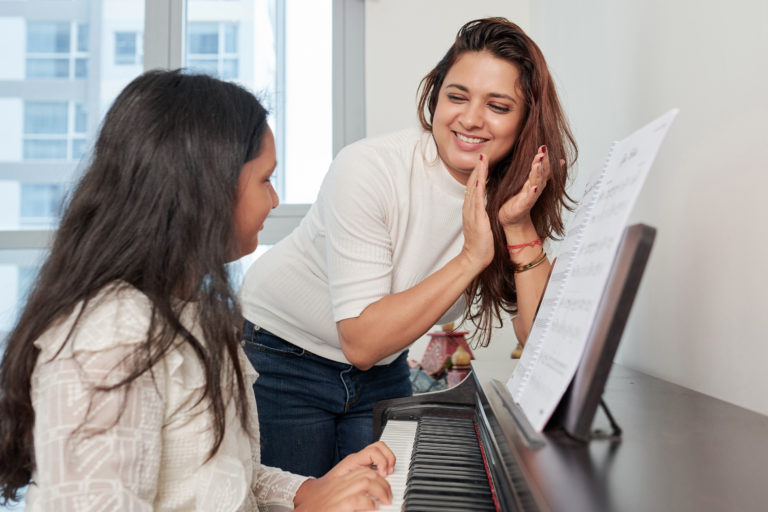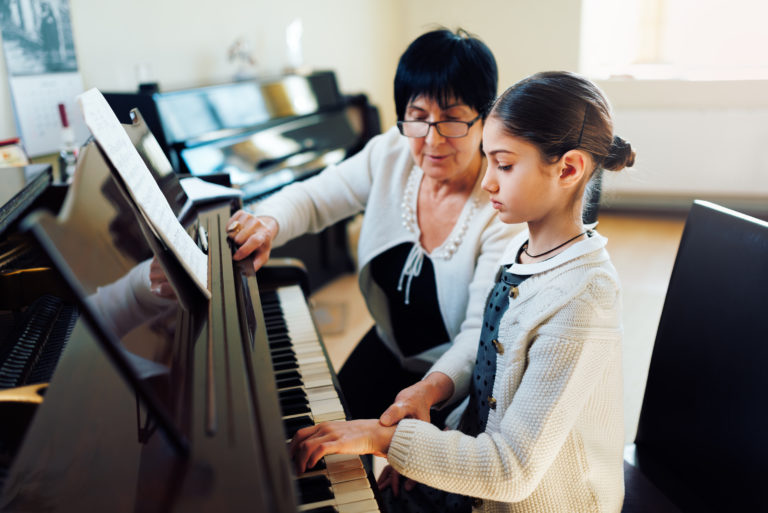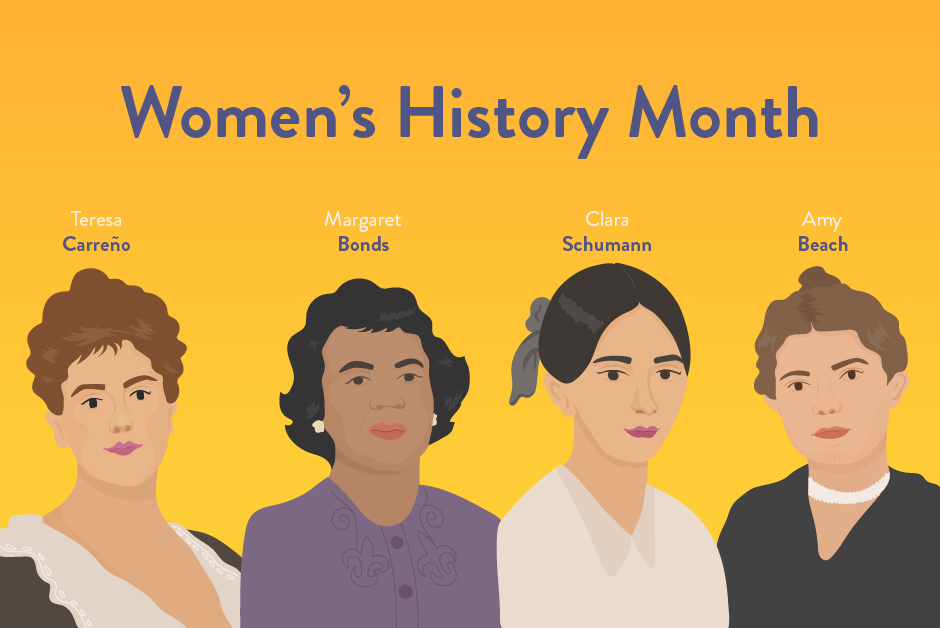All over the world, women have been participating in musical traditions as composers and teachers as well as performers ever since the first songs were sung! While we should celebrate the accomplishments of women who compose and perform music all year long, Women’s History Month presents a wonderful opportunity to start listening to composers and performers who are less familiar. Let’s dive in and take a moment to learn “her story” for women’s history month. We’ll start with a brief overview before sharing the stories of four historical women who became composers and performers.
Historians think the first author and composer may have been a Sumerian woman, the princess and priestess Enheduanna, who wrote the first known texts and hymns in the 23rd century B.C.E. The next female composer historians know of in Europe was Hildegard von Bingen–and she was born in 1098 C.E. A nun who later was named as a saint by the Catholic Church, Hildegard wrote in a style called monophonic chant that was common in the Middle Ages. Listen to one of her pieces here–it’s certainly very different from today’s music!
Hildegard von Bingen was not alone among the ladies as a composer in the High Middle Ages–fragments have survived from at least 15 other women writing music around the same time as her! As the Renaissance and Enlightenment eras came and went, music became available to more and more families–but writing music remained challenging for women because of the limits placed on them. A woman’s participation in music often depended on a parent or husband’s willingness to let them learn to play an instrument. In a time where women weren’t guaranteed an education, many women from wealthy families were able to start playing musical instruments and composing because their families thought it would increase their value in a marriage. They weren’t allowed to continue their passions once they reached a certain age. By the early 1800’s, some women became notable performers outside the home. One composer who struggled with recognition was Fanny Mendelssohn–while her family was wealthy enough to encourage her compositions and performances, she was overshadowed by her brother Felix, who published some of her compositions under his name!
The history of women in music doesn’t end with pianists in petticoats in Europe. Women composers and performers played a key role in the music of Jazz and Blues in the 20th century United States. Ella Fitzgerald and Billie Holiday were two legendary African American singers and songwriters who chronicled the Civil Rights movement in song. Billie Holiday wrote and recorded one of the first protest songs, and Ella Fitzgerald won 13 Grammys for her stunning performances!! Both singers faced segregation while playing in nightclubs and concerts around the country. Often, they couldn’t stay at the hotels or dine at the restaurants where they performed. You can read more about the two of them and their impact on jazz and the blues here.
Spotlight on Women Composers
Now that we took a wide look at women’s history in music, let’s focus on four fabulous pianists and composers who happened to be women! All of them broke barriers in performance and composition, overcoming difficulties to find success and joy in making music.
Clara Schumann (1819-1896) Clara started playing the piano before the age of 5. Both of her parents were pianists and they were determined she would grow up to be a prodigy! Even though they divorced, which was highly unusual in the 1800s, she continued her studies with both while living with her father. Clara made her performance debut at age 9–and the night of that concert, she met an older boy who she’d eventually grow up to marry–the composer Robert Schumann. Clara played concerts until she was 72! Once she finally took a break from performing, she was the first woman on the faculty at the music school where she taught. Take a listen to Clara Schumann’s piano concerto here.
Teresa Carreno (1853-1917). Born María Teresa Gertrudis de Jesús Carreño García to musical parents, Teresa Carreno became a pianist, soprano, and composer. Teresa was born in Caracas, Venezuela to a family with connections to political power–her mother’s cousin was the revolutionary founder of Venezuela, Simon Bolivar. At the age of 8, her family immigrated to New York, and she made her debut. By 1863, Teresa had played at the White House for Abraham Lincoln. After her family moved to Paris, Teresa. At age 20, Teresa married the French violinist Emile Sauret, and they had one daughter. Amy Beach even dedicated a piece to Teresa–her piano concerto in C# Minor! Take a listen to Teresa’s beautiful Ballade for piano here.
Amy Beach (1867-1944) Amy was born in New Hampshire to a mother who loved to sing and play piano. However, unlike some of the other women in this list, her parents were not professional musicians. By age 4, Amy composed her first three pieces for piano while visiting her grandparent’s farm! Unlike many child prodigies, when Amy was approached by concert programmers to go on tour and perform, her parents decided to give her a normal upbringing instead. So, Amy made her debut with the Boston Symphony at age 16 instead of touring at an early age (like Clara or Teresa).. When Amy married her husband, the wealthy Dr. Beach, she agreed as part of their marriage to never teach piano, and to focus on composition, performing publicly only twice a year! Amy published the first American symphony composed and published by a woman–the Gaelic Symphony. After Amy’s husband passed away, she became an educator and was the first woman to sit on the board of the New England Conservatory. She even founded Beach Clubs, which taught young students how to play music.
Margaret Bonds (1913-1972) Margaret was such a talented pianist and composer that she started her college studies early, beginning at Northwestern University at age 16. While Margaret was still a student, she overcame a racist environment at her college to win a prestigious competition–the Wanamacher prize. In 1933, Margaret was the first Black person to perform with the Chicago Symphony Orchestra. Margaret Bonds and Langston Hughes were great friends. Together, they memorialized parts of the Civil Rights movement in song. They worked together to write musical theater pieces that centered the Black experience in the U.S. during this era. Check out Margaret’s solo piano works here!
Women’s History Month: Composer Playlist
Do you have a favorite singer or pianist today who is a woman? Now that you’ve learned a little more about how women have been involved in making music all through history, check out our playlist of music by women composers! Since March is Women’s History Month, now is the time to start listening.




